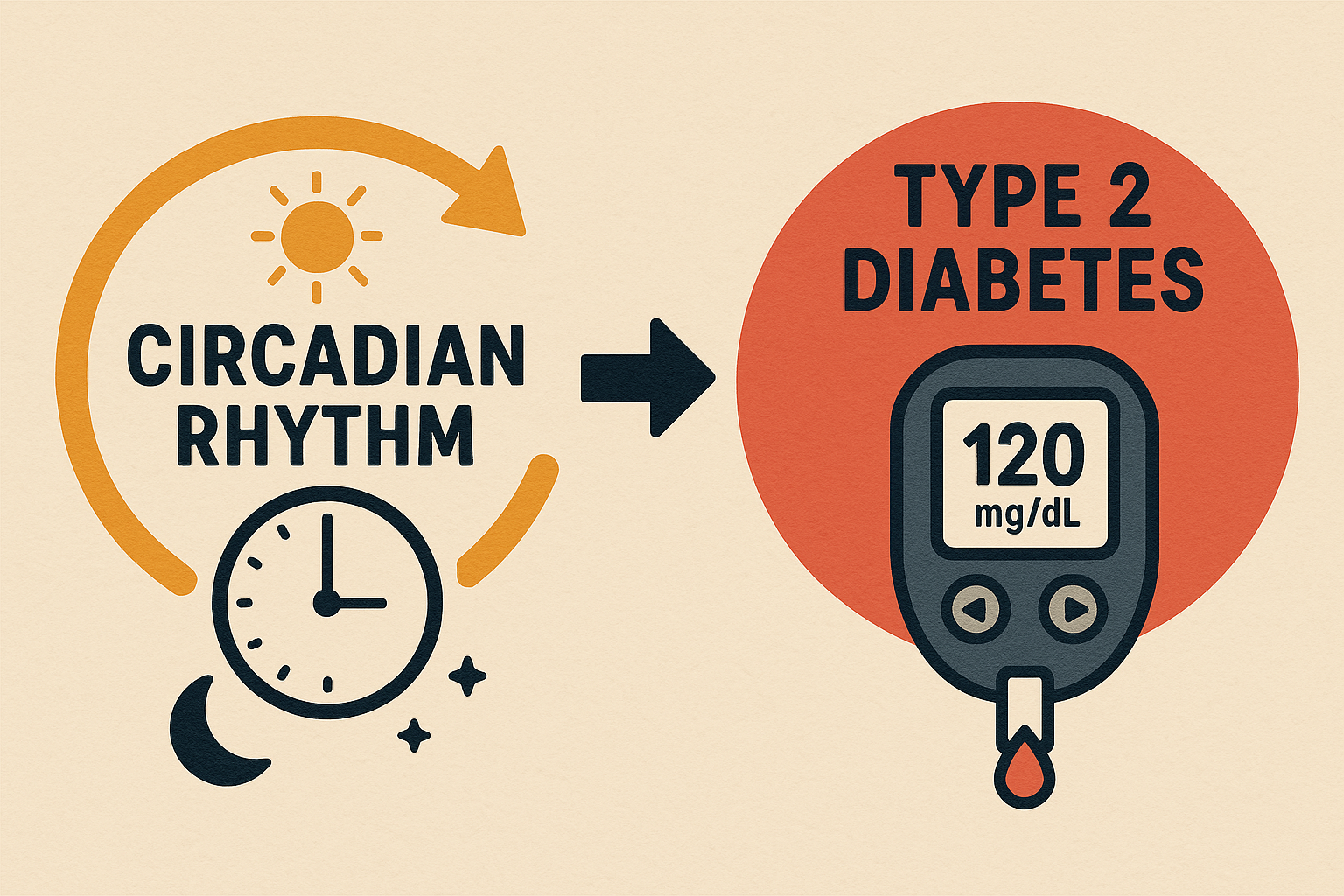The Impact of Circadian Rhythm on Type 2 Diabetes: A Nutritional, Physical Activity, and Sleep Perspective
The circadian rhythm, the body’s internal biological clock, plays a crucial role in regulating metabolism, insulin sensitivity, and overall glucose control. Disruptions to this rhythm have been linked to an increased risk of Type 2 Diabetes Mellitus (T2DM). In this article, we explore how circadian rhythm affects T2DM through the lens of nutrition, physical activity, and sleep, while also referencing recent scientific studies.
Nutritional Perspective: Timing of Meals and Metabolism
Meal timing is an essential factor in maintaining metabolic health. The body’s ability to process glucose and secrete insulin follows a circadian rhythm, with optimal efficiency occurring earlier in the day. After sunset, the pancreas doesn't secrete insulin as much as in the morning, cortisol release slows down, and melatonin release starts picking up, leading to further reduction in insulin levels. Eating late at night has been associated with poor glucose control and an increased risk of high fasting blood glucose levels.
A study published in Cell Metabolism (2020) found that eating meals late in the evening led to higher postprandial glucose levels and impaired insulin sensitivity compared to eating earlier in the day. This highlights that aligning meal timing with the body's natural rhythms may reduce the risk of metabolic disorders. Additionally, intermittent fasting and time-restricted eating strategies have been shown to support better glucose regulation when meals are consumed within a limited window, preferably earlier in the day.
Physical Activity: The Role of Exercise Timing
Engaging in physical activity at the right time of the day can optimize glucose metabolism and insulin sensitivity. Research suggests that exercising in the morning or afternoon may be more effective in improving glucose control compared to evening workouts.
A study published in Diabetes Care (2022) revealed that individuals with T2DM who exercised in the morning experienced greater reductions in HbA1c levels and improved insulin sensitivity compared to those who exercised in the evening. This is likely due to the body’s natural fluctuations in cortisol and insulin sensitivity, which peak during daytime hours. Morning exercise may also help regulate appetite and reduce evening cravings, further contributing to metabolic balance.
Sleep: Quality, Duration, and Its Effect on Glucose Regulation
Sleep is a critical component of circadian health, and disruptions in sleep patterns have been strongly linked to T2DM. Poor sleep quality, insufficient sleep, and irregular sleep schedules can lead to hormonal imbalances, increased stress levels, and impaired glucose metabolism.
A meta-analysis in The Journal of Clinical Endocrinology & Metabolism (2023) found that individuals who slept less than six hours per night had a 48% higher risk of developing T2DM compared to those who slept 7-8 hours. Irregular sleep patterns, such as those seen in shift workers, have also been linked to increased insulin resistance and higher fasting glucose levels. Prioritizing consistent sleep schedules and avoiding blue light exposure before bedtime can significantly enhance glucose regulation and reduce diabetes risk.
Conclusion
Maintaining a well-balanced circadian rhythm prevents and manages Type 2 Diabetes. Aligning meal times with natural metabolic cycles, engaging in physical activity at optimal times, and ensuring high-quality sleep are all evidence-backed strategies that can improve glucose control. By understanding and respecting our body’s biological clock, we can take proactive steps toward better metabolic health and diabetes prevention.
References
Cell Metabolism (2020): Study on late-night eating and glucose metabolism.
Diabetes Care (2022): Research on the impact of exercise timing on glucose control.
The Journal of Clinical Endocrinology & Metabolism (2023): Meta-analysis on sleep duration and T2DM risk.


